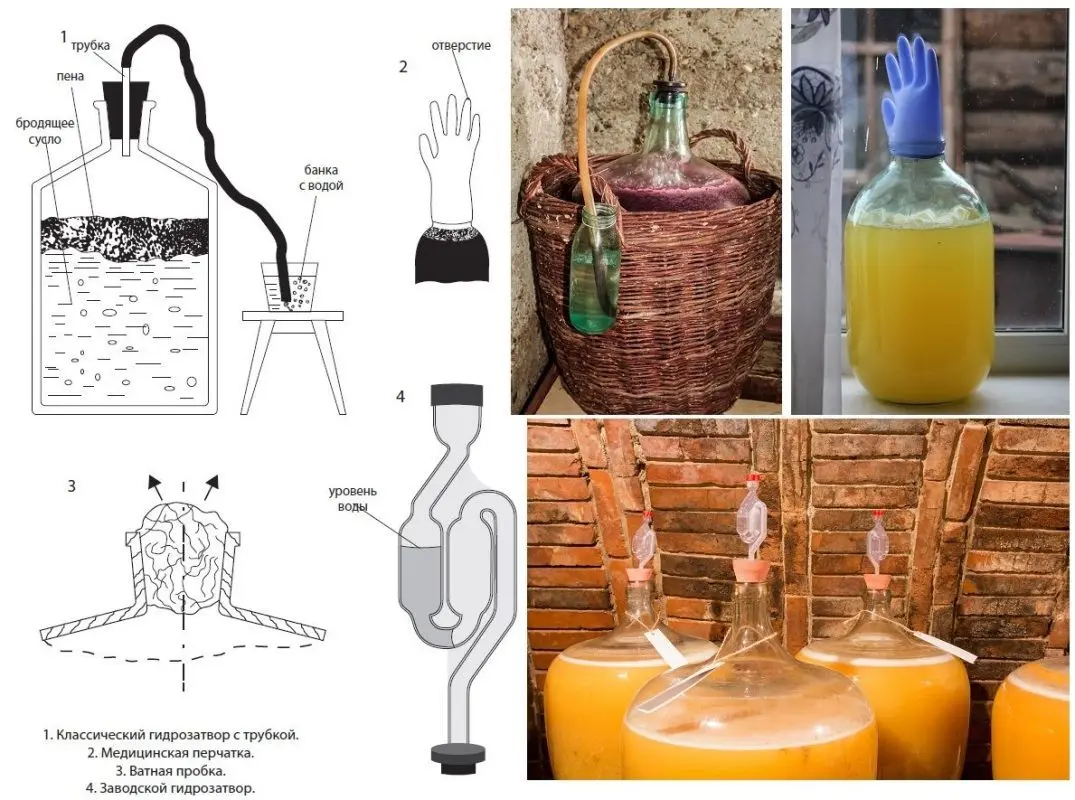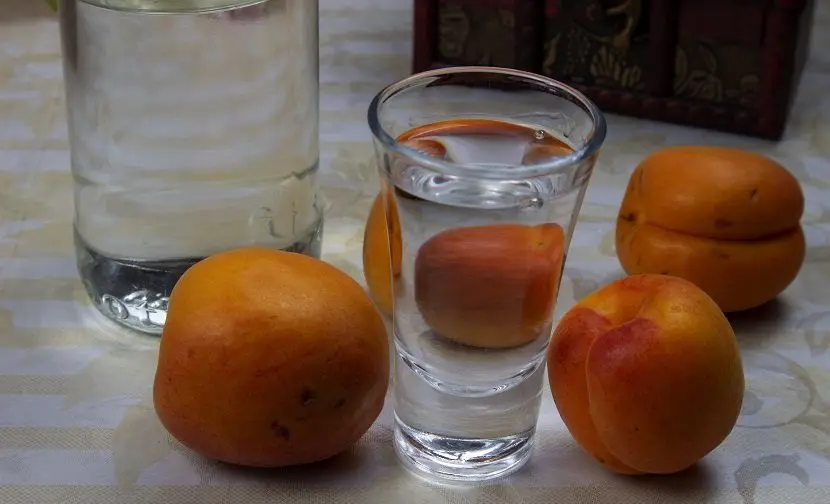In the classic recipe (without yeast and sugar), this is one of the most aromatic fruit distillates with a mild, refined taste. The method of making moonshine from apricots depends on the primary task: quality, quantity or speed. We will consider these three options.
Ripe and overripe apricots of any variety are suitable, you can even take wrinkled or very small ones. The main thing is that the fruits are free of rot and mold.
Ingredients:
- apricots – 10 kg;
- sugar – 1-5 kg (optional);
- water – 8 liters and another 4 liters for each kilogram of sugar;
- yeast – 100 grams pressed or 20 grams dry (optional).
Depending on the variety and growing region, apricots contain up to 11% fructose. This means that in the best case, without adding sugar from 10 kg of fruit, about 1,2 liters of distillate with a strength of 40 degrees will be obtained. Adding sugar according to the proportions in the recipe increases the yield to about 7 liters (1 kg gives 1,1 liters of forty-degree moonshine), but worsens the organoleptic – taste and smell. If the fruits are very sweet, I advise you to make apricot moonshine without sugar and yeast, it will be real German schnapps. Sugar must be added to sour apricots, otherwise the yield of the finished product will unpleasantly surprise you.
There are wild yeasts on the fruits themselves, which do an excellent job. Their only drawback is a long fermentation, the mash will be ready only after 25-40 days. The introduction of artificial yeast (alcohol or baker’s) reduces the fermentation time to 4-10 days, but has a bad effect on the aroma and sometimes taste. Therefore, if time is not running out, it is better to cook apricot mash with wild yeast.
Apricot mash recipe
1. Be sure to remove the seeds from unwashed fruits (important if you do it without yeast). Because of the bones in the moonshine, bitterness may appear.
2. With hands, a meat grinder or a blender, process the apricot pulp into a homogeneous gruel and put it in a fermentation container.
3. Add water, sugar and yeast diluted according to the instructions (for quick fermentation). Mix well. It is advisable to leave 20-25% of the volume free for foam.
4. Install a water seal on the neck of the container (medical rubber glove with a hole in the finger) and transfer to a dark place with room temperature (18-27°C). Depending on the selected yeast, after 2-48 hours the first signs of fermentation will appear: foam and hiss, then the water seal will start to release gas (gurgle) or the glove will inflate.

5. On wild yeast, apricot mash ferments for 25-40 days, on artificial yeast – up to 10 days. Fermentation will end when the water seal stops emitting gas (the glove deflates), the mash will brighten, become bitter in taste without sweetness, and a layer of sediment will appear at the bottom. It’s time for the race.
Getting moonshine from apricots
6. Pour the mash through cheesecloth into a distillation cube, squeeze the cake well. It is imperative to filter so that the remnants of the pulp do not burn during the distillation process and do not spoil the taste.
7. Distill the mash on a moonshine still of any design. Stop collecting distillate after falling below 30% ABV. It is advisable not to clean moonshine with charcoal or other methods, otherwise part of the aroma will disappear. The second distillation will help improve the quality.
8. Measure the strength of the distillate collected at the previous stage. Determine the amount of absolute alcohol (multiply the volume by the fortress and divide by 100). Dilute the entire drink with water, lowering the strength to 18-20%. Overtake a second time.
9. Collect the first 12-15% of the amount of absolute alcohol separately. This harmful fraction is called “heads”, you can not drink it (dangerous to health). Then take the distillate until the fortress at the outlet drops below 45 degrees. This is the product we need – the “body”.
10. Dilute apricot moonshine with water to the desired strength (usually 40-45%) and keep for 1-2 days in a dark, cool place, in a hermetically sealed glass container, before use.











